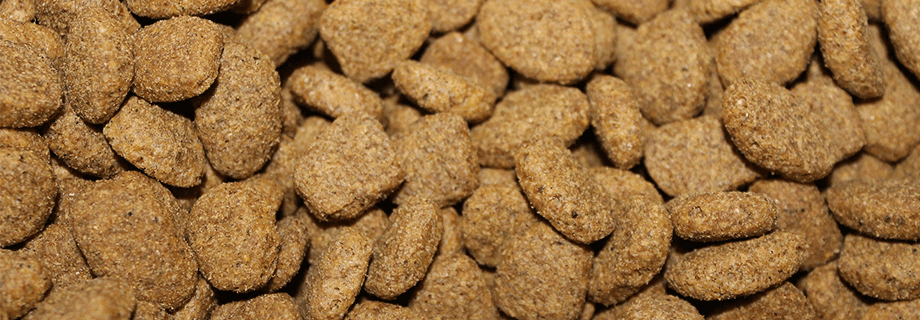43% Less Drying Needed With “Dry” Extrusion

The new Medium Shear Extruder from Insta-Pro provides a solution for quality producers of dry, shaped products, including dry pet food and fish feed for aquaculture. Insta-Pro has a long history of producing dry extruders, as well as the experience required to make dry extrusion successful.
So, what is “dry extrusion”? This term creates some confusion from time to time. All extrusion procedures involve moisture, and thus, are really not dry (when defined as the absence of water). In the case of Insta-Pro, our extruders do not require steam or moisture in the barrel to generate heat, which is produced from friction following the mechanical interactions of the mixed ingredients (which naturally contain water), screws, steam locks, and the internal barrel wall. It is true that water may be injected into the barrel directly, or as steam into the preconditioner (before extrusion), but strictly speaking, “dry” extrusion requires no additional moisture for cooking.
As a result, dry extrusion is typically conducted at lower moisture levels than wet extrusion. Following extrusion, normal moistures for dry extruded product run 16-20%, while moisture in products following wet extrusion ranges from 22-28%. Of course, these values will vary depending on the diet formulation, type of extruder, extrusion parameters, and perhaps, atmospheric conditions at the time of production.
The challenge after extrusion is simple to understand, and extremely important – what do you do with all of the moisture? At these moisture levels just mentioned, spoilage microorganisms and pathogenic bacteria will flourish, and you will quickly be left with unsalable product. So, the answer is drying, and the more moisture present after extrusion, the more drying required. Drying product down to 10-12% moisture will allow for preservation, and this is typically done with a heated, conveying dryer.
So, let’s do some quick calculations:
Dry extrusion Wet extrusion
Typical post-extrusion moisture (%) 18 24
Final product moisture (after drying, %) 10 10
Percentage units of moisture to remove (%) 18 – 10 = 8 24 – 10 = 14
Relative moisture to be removed with wet extrusion vs. dry: 14 – 8 = 6 / 14 x 100 = 43% more moisture must be removed with wet extrusion to have safe, salable product.
So, in conclusion, dry extrusion uses less water than wet extrusion, and therefore, less water must be driven off to have salable finished product. As a result, less energy will be required for heated drying with dry extrusion. Insta-Pro’s Medium Shear Extruder uses dry extrusion to produce quality, dry pet foods and fish feeds. In my next blog, I will discuss the detrimental effects of heating for drying on nutrient quality.



